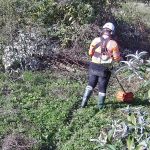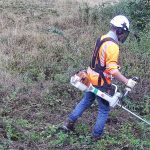The May 2021 edition of Bath Voice is out now. Here is the text of our article featured in this edition.
The Tufa Field – Touchstone for a policy
When Bath and Northeast Somerset Council passed plans to build 37 executive houses on a Site of Nature Conservation Interest in the south of Bath, it unleashed a backlash that quickly elicited a 5000 plus signature petition and a political crisis for the ruling Liberal Democrat party.
The plans, passed against the advice of the Council’s ecologists, were an immediate challenge to the newly declared Ecological Emergency, a flagship policy of the administration.
At the heart of the problem is the conflict between the Council’s political aspirations and the practical reality of implementation. The bureaucracy intrinsic in all Governmental bodies is ill-suited to quick decisions or agile responsiveness, and requires a sea-change in thinking and organisation if they are to respond effectively.
The Tufa Field is a perfect example of the challenges and changes needed. This small piece of undeveloped land in an affluent suburb of Bath is a magnet to developers and for a cash-strapped council, a quick boost to finances. There has been no attempt to disguise this, no pretence of providing affordable housing or relieving the chronic accommodation shortage for our poorest citizens. At over three-quarters of a million pounds, these houses are more likely to attract Londoners fleeing dense urban life than local people.
Historically, the lands of the Moorlands Estate, home at one time to Anna Sewell, have gradually been urbanised and spawned the adjacent award-winning Moorfields Estate, a model post-war development of light and airy housing with good-sized gardens set in grassed areas for children to play safely. In a post-pandemic world, a true model of homes over housing.
Yet the Tufa Field was never developed. Successive attempts were made from the 1970’s but it’s unique geology, (it sits on a major aquifer), meant that ground conditions were too difficult. Left alone, quietly the land developed geological and ecological uniqueness.
The Tufa Flushes grow from the constant dissolving and deposition of the famous Bath limestone, creating rare formations, and providing a specialised environment for flora and fauna alike. This environment is almost unique in the area and suggestions that it could be artificially reproduced elsewhere are at best unproven and most probably fanciful.
But the larger picture is perhaps even more important and raises the central question – How should we treat our urban green spaces?
We have encouraged ever denser developments, driving people to live in smaller dwellings, selling off gardens and cramming people together. Now we are faced with the consequences of those policies at a time when we need, and will continue to need, more outdoor space, more connection with the environment that sustains us, and more opportunities to put space between us. Our urban green spaces become more than just a pretty backdrop, they become an essential part of our well-being, our mental and physical health and our relationship with each other.
The Tufa Field cause will be the true test of our ability and willingness to make the hard decisions needed to rebuild the greener, sustainable and healthier environment we need . The Council’s commitment to its declared policy is on trial, it will be judged on its handling of the Tufa Field.














 Total views : 99777
Total views : 99777

Leave a Reply